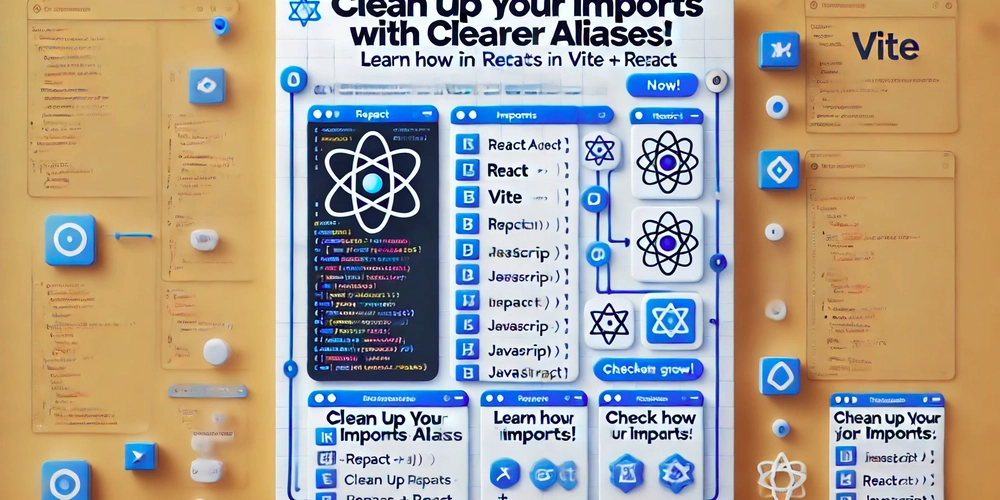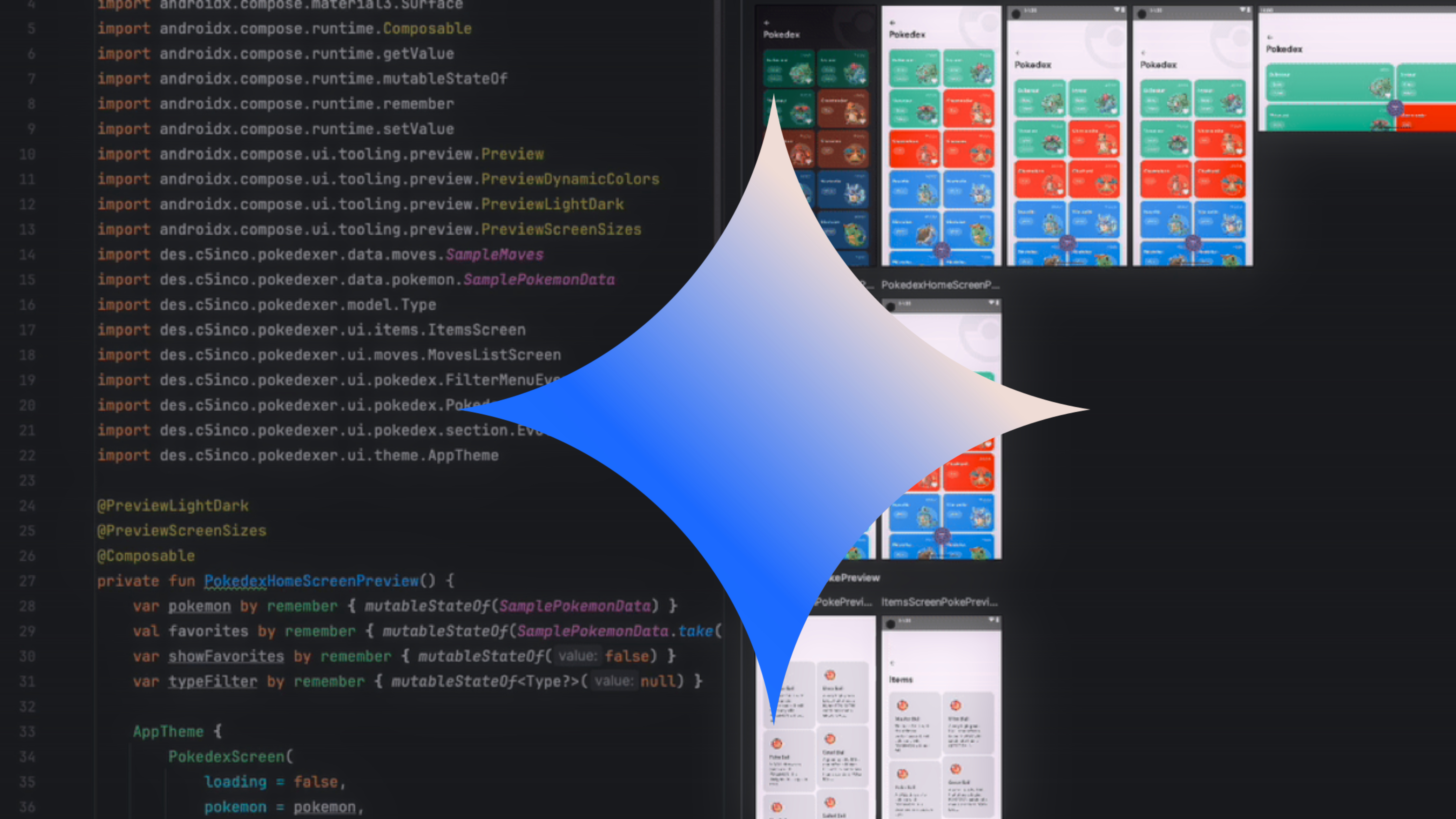How to Create Custom Aliases in Vite for Cleaner Imports
Tired of messy import paths in your React project? Learn how to simplify your code with custom aliases using Vite! ✨ Check out our step-by-step guide to make your imports cleaner and your development faster. Description Learn how to set up and optimize Vite for your React projects! This guide covers everything from integrating React with SWC for faster builds to configuring custom aliases. Follow along with practical examples to supercharge your development workflow. A Step-by-Step Guide Vite has quickly become a favourite among developers for building fast and efficient React applications. In this guide, we’ll explore how to set up a powerful Vite configuration tailored for React projects. We’ll cover everything from integrating React with SWC for faster builds, defining custom aliases, and optimizing the development experience. Let's dive in! Why Use Vite with React? Vite is a next-generation frontend build tool that is extremely fast and efficient. When combined with React and SWC (a super-fast JavaScript/TypeScript compiler), it significantly speeds up development and build times. Here’s why you should consider using Vite with React: Lightning-fast HMR (Hot Module Replacement): Instant updates without reloading the whole page. Faster Builds: Thanks to its modern architecture and SWC integration. Enhanced Developer Experience: With easy configuration and plugin support. Before // src/components/Message.jsx // src/assets/logo.png import React from 'react'; import Logo from './../assets/logo.png'; import Message from './../components/Message'; const HelloWorld = () => { return ( ); }; export default HelloWorld; After // src/components/Message.jsx // src/assets/logo.png import React from 'react'; import Logo from 'src/assets/logo.png'; import Message from 'src/components/Message'; const HelloWorld = () => { return ( ); }; export default HelloWorld; Getting Started Before we begin, ensure you have Node.js and npm installed on your system. If not, download them from nodejs.org. Step 1: Initialize a Vite Project To get started with Vite and React, run the following command: npm create vite@latest my-react-app --template react cd my-react-app npm install This sets up a React project using Vite. Now, let’s configure it to make development faster and easier. Configuring Vite for React Below is a complete vite.config.js configuration tailored for React projects: import path from "path"; import { defineConfig } from "vite"; import react from "@vitejs/plugin-react-swc"; export default defineConfig({ base: "/", plugins: [react()], resolve: { alias: [ { find: /^~(.+)/, replacement: path.resolve(process.cwd(), "node_modules/$1"), }, { find: /^src(.+)/, replacement: path.resolve(process.cwd(), "src/$1"), }, ], }, server: { port: 3031, }, preview: { port: 3031, }, build: { sourcemap: true, }, }); Breaking Down the Configuration 1. React with SWC import react from "@vitejs/plugin-react-swc"; We are using @vitejs/plugin-react-swc to compile React faster using SWC. It’s a great alternative to Babel because of its blazing-fast speed. 2. Custom Aliases To make imports cleaner and avoid lengthy relative paths, we define custom aliases: resolve: { alias: [ { find: /^~(.+)/, replacement: path.resolve(process.cwd(), "node_modules/$1"), }, { find: /^src(.+)/, replacement: path.resolve(process.cwd(), "src/$1"), }, ], }, ~ is used to access modules from node_modules. src is used to access files from the src directory. Example Usage: import MyComponent from 'src/components/MyComponent'; 3. Custom Server Port server: { port: 3031, }, preview: { port: 3031, }, We’ve set the development and preview servers to use port 3031. Feel free to change it to any port you prefer. 4. Source Maps for Easier Debugging build: { sourcemap: true, }, Enabling source maps helps in debugging by allowing you to see the original source code in the browser’s developer tools. Installing Dependencies To use this configuration, install the necessary packages: npm install @vitejs/plugin-react-swc vite-plugin-checker Running the Project After setting up the configuration, you can run the development server with:Running the Project npm run dev Open your browser and navigate to http://localhost:3031. Conclusion Congratulations! You’ve now mastered configuring Vite for React with: React and SWC for faster builds. ESLint integration for consistent code quality. Custom aliases for cleaner imports. A custom server port and source maps for better debugging. This configuration makes development faster, cle

Tired of messy import paths in your React project? Learn how to simplify your code with custom aliases using Vite! ✨
Check out our step-by-step guide to make your imports cleaner and your development faster.
Description
Learn how to set up and optimize Vite for your React projects! This guide covers everything from integrating React with SWC for faster builds to configuring custom aliases. Follow along with practical examples to supercharge your development workflow.
A Step-by-Step Guide
Vite has quickly become a favourite among developers for building fast and efficient React applications. In this guide, we’ll explore how to set up a powerful Vite configuration tailored for React projects. We’ll cover everything from integrating React with SWC for faster builds, defining custom aliases, and optimizing the development experience. Let's dive in!
Why Use Vite with React?
Vite is a next-generation frontend build tool that is extremely fast and efficient. When combined with React and SWC (a super-fast JavaScript/TypeScript compiler), it significantly speeds up development and build times. Here’s why you should consider using Vite with React:
- Lightning-fast HMR (Hot Module Replacement): Instant updates without reloading the whole page.
- Faster Builds: Thanks to its modern architecture and SWC integration.
- Enhanced Developer Experience: With easy configuration and plugin support.
Before
// src/components/Message.jsx
// src/assets/logo.png
import React from 'react';
import Logo from './../assets/logo.png';
import Message from './../components/Message';
const HelloWorld = () => {
return (

);
};
export default HelloWorld;
After
// src/components/Message.jsx
// src/assets/logo.png
import React from 'react';
import Logo from 'src/assets/logo.png';
import Message from 'src/components/Message';
const HelloWorld = () => {
return (

);
};
export default HelloWorld;
Getting Started
Before we begin, ensure you have Node.js and npm installed on your system. If not, download them from nodejs.org.
Step 1: Initialize a Vite Project
To get started with Vite and React, run the following command:
npm create vite@latest my-react-app --template react
cd my-react-app
npm install
This sets up a React project using Vite. Now, let’s configure it to make development faster and easier.
Configuring Vite for React
Below is a complete vite.config.js configuration tailored for React projects:
import path from "path";
import { defineConfig } from "vite";
import react from "@vitejs/plugin-react-swc";
export default defineConfig({
base: "/",
plugins: [react()],
resolve: {
alias: [
{
find: /^~(.+)/,
replacement: path.resolve(process.cwd(), "node_modules/$1"),
},
{
find: /^src(.+)/,
replacement: path.resolve(process.cwd(), "src/$1"),
},
],
},
server: {
port: 3031,
},
preview: {
port: 3031,
},
build: {
sourcemap: true,
},
});
Breaking Down the Configuration
1. React with SWC
import react from "@vitejs/plugin-react-swc";
We are using @vitejs/plugin-react-swc to compile React faster using SWC. It’s a great alternative to Babel because of its blazing-fast speed.
2. Custom Aliases
To make imports cleaner and avoid lengthy relative paths, we define custom aliases:
resolve: {
alias: [
{
find: /^~(.+)/,
replacement: path.resolve(process.cwd(), "node_modules/$1"),
},
{
find: /^src(.+)/,
replacement: path.resolve(process.cwd(), "src/$1"),
},
],
},
- ~ is used to access modules from node_modules.
- src is used to access files from the src directory.
Example Usage:
import MyComponent from 'src/components/MyComponent';
3. Custom Server Port
server: {
port: 3031,
},
preview: {
port: 3031,
},
We’ve set the development and preview servers to use port 3031. Feel free to change it to any port you prefer.
4. Source Maps for Easier Debugging
build: {
sourcemap: true,
},
Enabling source maps helps in debugging by allowing you to see the original source code in the browser’s developer tools.
Installing Dependencies
To use this configuration, install the necessary packages:
npm install @vitejs/plugin-react-swc vite-plugin-checker
Running the Project
After setting up the configuration, you can run the development server with:Running the Project
npm run dev
Open your browser and navigate to http://localhost:3031.
Conclusion
Congratulations! You’ve now mastered configuring Vite for React with:
- React and SWC for faster builds.
- ESLint integration for consistent code quality.
- Custom aliases for cleaner imports.
- A custom server port and source maps for better debugging.
This configuration makes development faster, cleaner, and more enjoyable. Experiment with additional plugins and settings to tailor it further to your needs!
Final Thoughts
Vite is revolutionizing frontend development with its speed and simplicity. By combining it with React and SWC, you get the best of both worlds. Use this guide to set up your projects and boost your productivity.
Happy Coding!










































































































































































![[The AI Show Episode 143]: ChatGPT Revenue Surge, New AGI Timelines, Amazon’s AI Agent, Claude for Education, Model Context Protocol & LLMs Pass the Turing Test](https://www.marketingaiinstitute.com/hubfs/ep%20143%20cover.png)


































































































































![From drop-out to software architect with Jason Lengstorf [Podcast #167]](https://cdn.hashnode.com/res/hashnode/image/upload/v1743796461357/f3d19cd7-e6f5-4d7c-8bfc-eb974bc8da68.png?#)













































































































.png?width=1920&height=1920&fit=bounds&quality=70&format=jpg&auto=webp#)


.png?width=1920&height=1920&fit=bounds&quality=70&format=jpg&auto=webp#)




































































































































![Apple Rushes Five Planes of iPhones to US Ahead of New Tariffs [Report]](https://www.iclarified.com/images/news/96967/96967/96967-640.jpg)
![Apple Vision Pro 2 Allegedly in Production Ahead of 2025 Launch [Rumor]](https://www.iclarified.com/images/news/96965/96965/96965-640.jpg)


































































































































